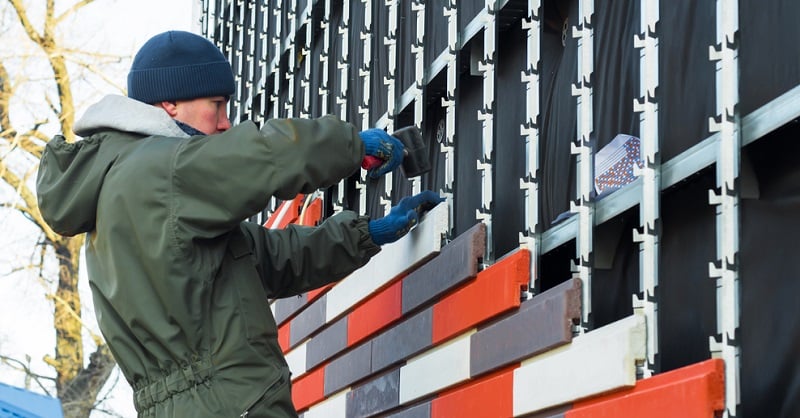The government has revealed that EWS1 (External Wall System) forms should no longer be a requirement for buildings below 18m, following advice from fire safety experts commissioned earlier this year by the Secretary of State for Housing, Communities and Local Government.
Robert Jenrick said that since the Grenfell fire tragedy the government has engaged fire and rescue services to survey all buildings over 18m to assess their safety.
It has also targeted funding towards the buildings it knew to be at greatest risk if a fire spreads - those over 18m with unsafe cladding – investing more than £5bn to make those buildings safe.
It has also banned the use of combustible materials in new buildings over 18m, providing industry with a clear standard for the construction of new builds.
As well as this, it has incentivised the installation of central alarm systems in high-rise buildings.
But Jenrick said: "Earlier this year I asked a small group of experts on fire safety to consider the evidence and advise me on steps that should be taken to ensure that a more risk-proportionate approach is taken to fire safety in blocks of flats.
"An approach through which genuine life safety risks are tackled swiftly, and where all blocks of flats meet statutory requirements on life safety, but where excessive caution and unnecessary costs are avoided."
As a result of the advice from these experts, the government has announcedEWS1 forms should not be a requirement on buildings below 18 metres.
Jenrick also said there should be a clear route for residents/leaseholders to challenge costly remediation work and seek assurance that proposals are proportionate and cost effective.
Following the announcement on the EWS1 forms,HSBC UK, Barclays, Lloyds Banking Group have all committed to review their practices following the new advice.
The government has said it welcomes their support and is now calling on others to demonstrate leadership by working rapidly to update guidance and policies in line with the expert advice.
Jenrick said: “Today’s announcement is a significant step forward for leaseholders in medium and lower-rise buildings who have faced difficulty in selling, anxiety at the potential cost of remediation and concern at the safety of their homes.
“While we are strengthening the overall regulatory system, leaseholders cannot remain stuck in homes they cannot sell because of excessive industry caution, nor should they feel that they are living in homes that are unsafe, when the evidence demonstrates otherwise.
“That’s why I commissioned an expert group to further examine the issue, and have already agreed with many major lenders that lower-rise buildings will no longer need an EWS1 form, and the presumption should be that these homes can be bought and sold as normal.
“We hope that this intervention will help restore balance to the market and provide reassurance for existing and aspiring homeowners alike. The government has made its position very clear and I urge the rest of the market to show leadership and endorse this evidence based safety approach.”
UK Finance and the Building Societies Association welcomed the move. In a joint statement on the issue, they said: “Flats should be safe places to live, so we welcome the government’s expert panel view that there is no systemic risk from fire in medium and lower rise blocks.
“We also welcome the actions the government has outlined today, including the withdrawal of the current Consolidated Advice Note on cladding, and urge them to continue to work with relevant stakeholders to ensure all documents, including the RICS guidance, align with the views of the expert panel.
“Once these changes are made both borrowers and lenders should be in a clearer position and know what is expected of them.”




